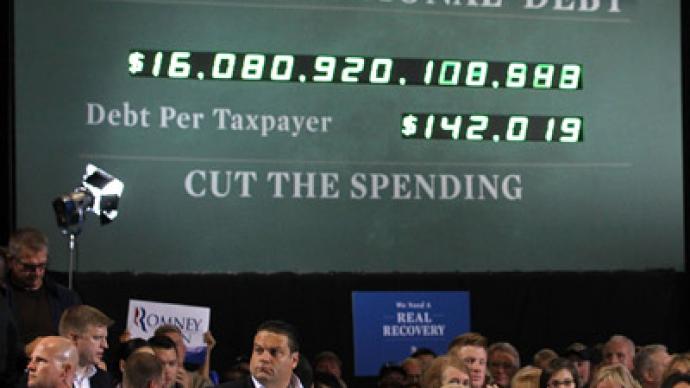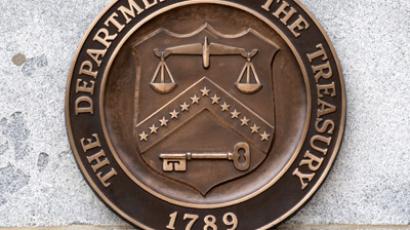US austerity? US 'fiscal cliff' would trigger cuts of up to 5.1% GDP

As US public debt is about to rise over the limit of $16.39 trillion, analysts warn of the drastic damage it could create. Should the debt limit remain unchanged, the US economy will have to suffer austerity measures worth around $804.5 billion.
The debt held by the public skyrocketed to about 102% of the US GDP in 3Q 2012. The ratio was higher only once in the US economic history – in 1945 when it reached 113% of GDP.Meanwhile, a new so-called “debt ceiling”, that was last raised by Congress in January 2012 to $16.394trln, seems to be not high enough, as the figures show that the room for further borrowing is becoming increasingly narrower. Earlier this week the US Treasury said the country was set to hit the debt limit by the end of the year. Meanwhile the Treasury has continued to unveil borrowing plans that include massive bond issues, which will inevitably drive the US economy deeper into debt.If the US Congress does not raise the debt ceiling in the next few months, it would result in an “onset of austerity measures worth 5.1% of American GDP,” or $804.5bn, Margaret Bogenrief from ACM Partners told Business RT.“The world currently sits on the precipice of a debt cliff – the rate of debt growth for the United States is, economically, unsustainable and must be curbed within the next 5 years,” added Bogenrief. A combination of increased taxes and limited spending would pave the way out of the debt hole for the US, the ACM Partners expert added.While the need to curb the extravagance of the US – a nation of debt lovers – is clear, a collision of the economic and political reasoning is now one of the main stumbling blocks, according to Bogenrief. Economically, continued growth of US debt will keep on weighing down and destabilizing the American economy. But politically, lower Government spending and higher taxes would not be popular among US citizens.Also, there’s “a collision between what Americans say they want versus what they prefer in reality – it’s easy to say we need to cut spending and raise taxes – as long as we cut spending allocated to other people while raising other people’s taxes,” Bogenrief concluded.While allowing a broader opportunity for increased consumption, excessive borrowing can pose a real economic threat long term, Max Wolff, a NYC-based economist, added to Business RT.“Consistent US debt growth is a short term boom to the US and global economies. It allows greater growth and demand now in exchange for increased financial fragility and lowered growth and demand in the future. This is the essenece of debt. Debt moves purchasing power through time. It is sustainable when it pays for greater growth in incomes in the future. If this fails, it is very dangerous,” the economist explained.“Some amount of borrowing is necessary for any industrialized economy. For the past four years, however, the United States has averaged $1trln +in annual deficits – the growth in debt is unprecedented in American history, unsustainable, and has no easy answer in sight,” Bogenrief concluded.














